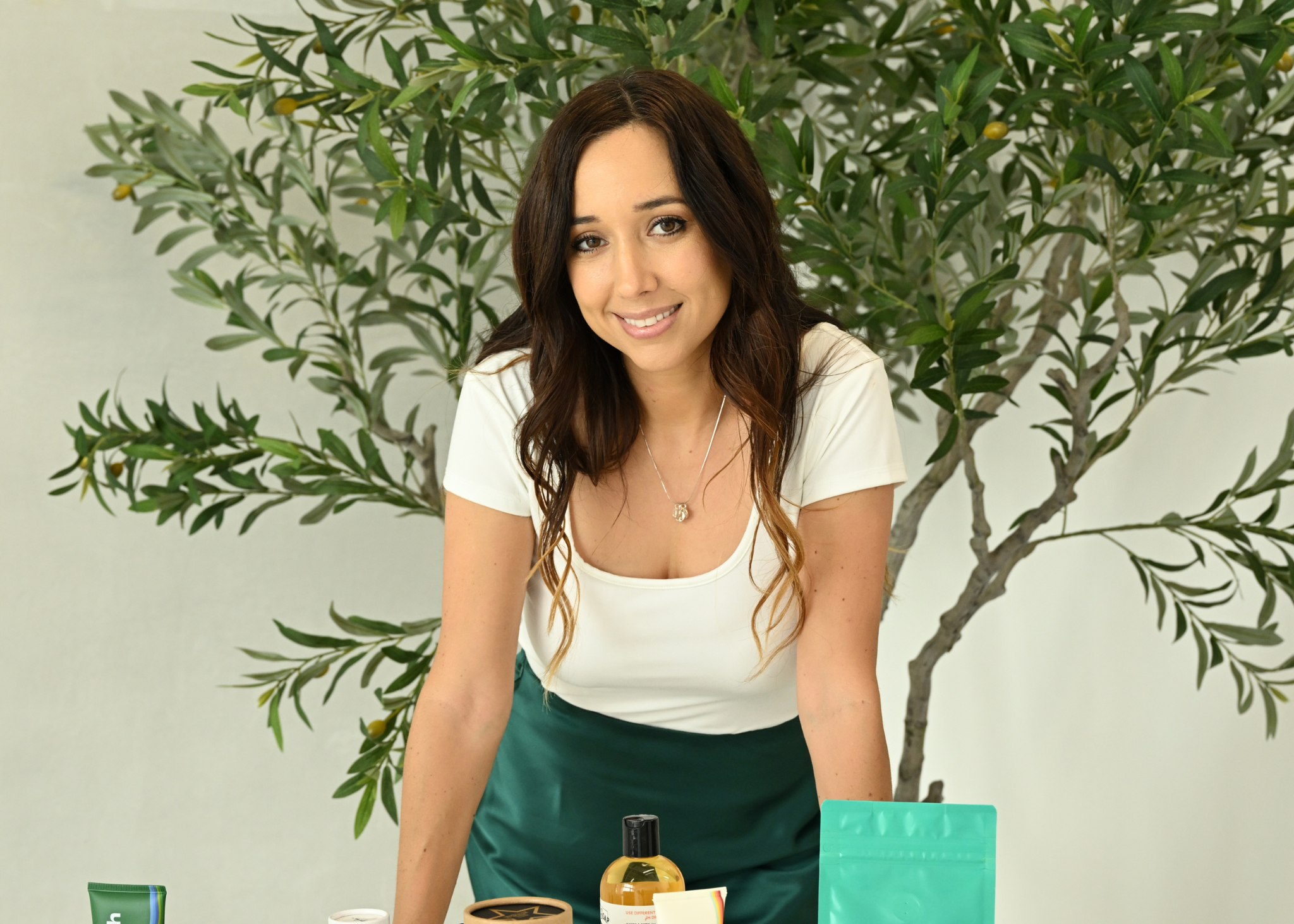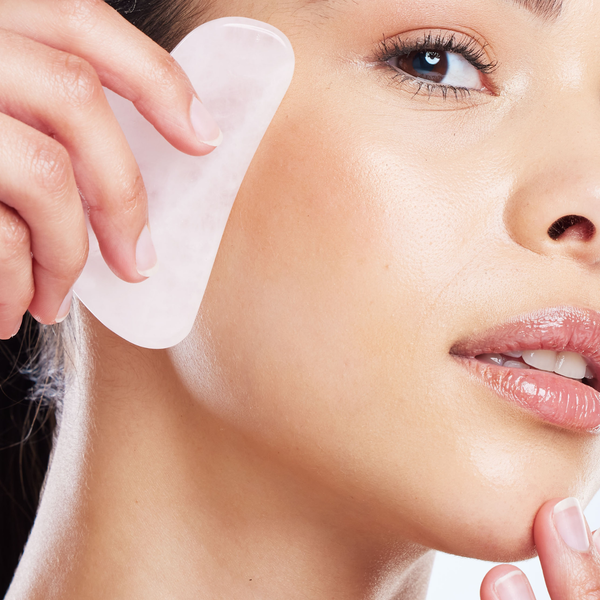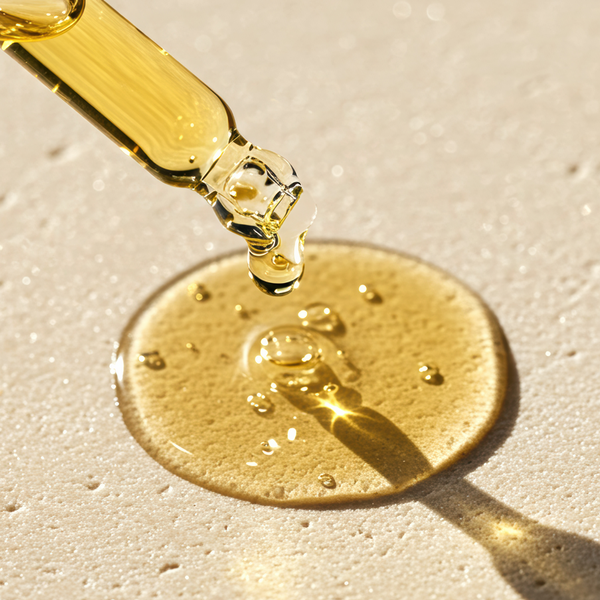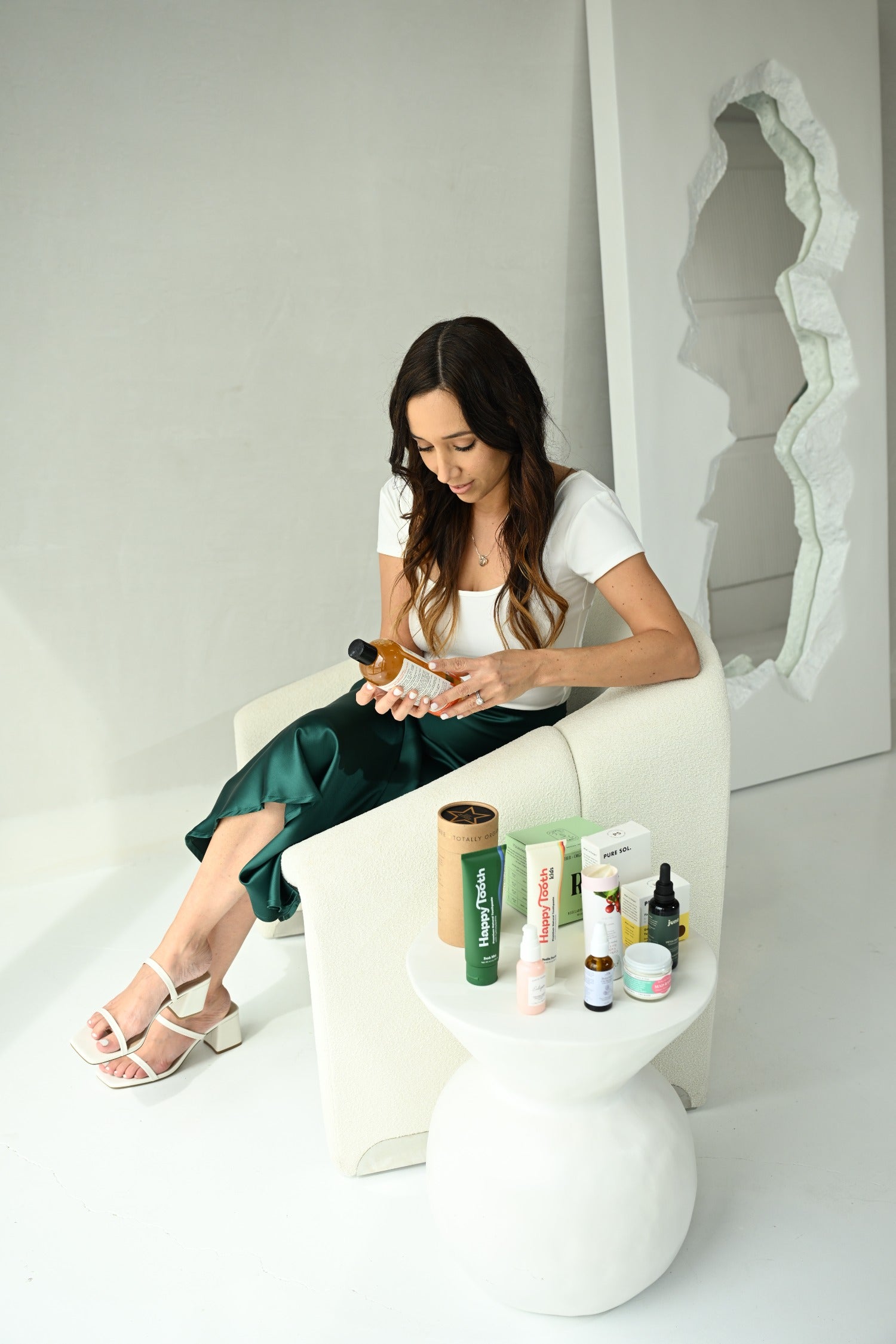If you’ve spent any time scrolling through clean living spaces or natural skincare threads, you’ve likely seen it: the debates, the disagreements, and the endless contradictions. One scan app tells you a product is safe. Another says to throw it in the trash immediately. One influencer praises a brand as nontoxic; another says it’s greenwashing.
So what gives? Here’s the truth: there is no universal definition of "clean."
Clean means different things to different people, and that’s not necessarily a bad thing. It just means we all have unique priorities, perspectives, and needs. And rather than chasing someone else’s checklist, we should all feel empowered to define what clean means for ourselves.
Why Definitions of "Clean" Vary
No single definition exists. For example: some people avoid hormone disruptors and carcinogens above all else. Others focus on water safety and eco-impact, steering clear of ingredients known to harm aquatic life. Some only use products made with 100% natural ingredients. Others are open to safe synthetics but avoid certain preservatives or fillers. Maybe some are vegan and avoid honey or tallow. For some, packaging matters—only glass or aluminum, no plastic. Others consider ethical sourcing, cruelty-free status, or brand transparency non-negotiable.
None of these standards are wrong. They're simply different.
But What Is Toxic, Anyway?
Before we go any further, let’s talk about the word "toxic"—because it gets thrown around a lot in clean living spaces. So, what actually makes something toxic?
Here’s the first thing to know: the dose makes the poison. Even water, in extreme quantities, can be toxic. Toxicity isn’t always about what the substance is—but how much and how often it’s used, how it’s absorbed, and how the body processes it. Your skin, your liver, and your detox pathways all play a role in how well your body handles different exposures.
Second, not all bodies react the same. Genetics, health history, immune function, and even stress levels can impact your body’s sensitivity to different compounds. One example of this is how not everyone who smokes a pack of cigarettes a day gets cancer at the same time. All of our bodies function differently, so understanding your own body plays a huge role in setting your own clean standards.
Finally, toxicity must be weighed against context. Is the ingredient meant to be rinsed off or left on? Is it applied topically or ingested? Is it a one-time exposure or something you use every day? Is it among the better choices available to you? Risk must be balanced with benefit—and this is where setting your own standards becomes so empowering. It allows you to make informed, rational decisions based on your body and values, not just online noise. Personal story—recently, our family had a tick scare with my 4-year old son. I had 2 options: hope he doesn't get Lyme disease or do 2 weeks of antibiotics. I chose the antibiotics. Are antibiotics without risk? No, of course not. However, in this case, Lyme disease is a far worse illness, and if a 2-week stint of antibiotics was going to offer our family peace of mind, then we were choosing the antibiotics. Risks vs. benefits.
Clean, Natural, Non Toxic—Are All Unregulated Terms
Because "clean" isn't regulated (in the U.S. at least), every brand, blog, and expert defines it differently. One app might flag an ingredient for allergy potential, while another praises its safety rating (spoiler alert: there is no perfect app). This leads to confusion and, often, frustration—especially if you’ve already made a clean swap and someone online tells you it’s not good enough.
I’ve been on both sides of that statement. I’ve felt proud of a cleaner choice, only to have it questioned. I’ve also unknowingly made someone feel discouraged by suggesting something "better."
This is your reminder: Progress, not perfection, is the goal. Today, we are going to help you set your own standards so you can feel empowered to make choices.
Setting Your Own Clean Standards
Having clear, personal standards does more than simplify your choices—it protects your mental health. Once you know what you’re comfortable with (and what you’re not), you can tune out the noise and trust your decisions.
Ask yourself:
- What ingredients or materials do I absolutely want to avoid?
- Are there any causes or values I want to support (e.g., cruelty-free, small brands, American-owned, biodegradable packaging)?
- Am I okay with safe synthetics or do I prefer 100% natural?
- What trade-offs am I willing to make, and which ones are non-negotiable?
Once you answer these, you have your own clean living guide—custom to you.
Clean Standards Checklist
Use this list to help define your own clean living standards. For each one you choose to adopt, I’ve included helpful tips (👉) on how to implement it in everyday life.
🔲 No Petroleum-Derived Ingredients
As a Certified Organic Skincare Formulator, I can tell you avoiding petro-ingredients is a common standard for clean brands and a big indicator of a brand's commitment to sustainable and healthier choices. That is not to say that all petro-ingredients are harmful (it's definitely possible for there to be safe ones). However, in the U.S., brands are not required to disclose the refining history of petro-ingredients. And the safety of petro-ingredients is directly tied to its purity. There are also environmental or ethical reasons one might avoid petro-ingredients. If you do choose to be okay with some petro-ingredients, you really have to trust the brand's sourcing. For others, it's easier to just avoid entirely.
👉 If this is a standard you wish to take on, you will need to review ingredient labels carefully. For many ingredients, both petrochemical and plant-based versions exist, but the INCI name stays exactly the same, making it really hard for the average consumer to tell the difference. Examples of these ingredients include: Glycerin, Butylene Glycol (many other Glycols too), Undecane (many other -cane ingredients too), Stearic Acid, and Cetyl Alcohol / Cetearyl Alcohol.
If the label doesn't specify "plant-based" or "plant-derived," simply ask the brand! Other clues might include references to "naturally-derived", "plant-derived", "biobased", or eco-cert. USDA organic certification or COSMOS certification (used in Europe and Internationally) also do not allow petro-chemicals.
🔲 No Animal-Based Ingredients
This is always a great example of why setting your own standards should be the norm. Tallow, honey, beeswax... are highly celebrated ingredients in the clean living space, but what if you're vegan?
👉 If this is a standard you wish to take on, check your ingredient labels. Some ingredients could be plant-derived or animal-derived. In some cases, you'll need to confirm with the brand. Examples of ingredients some don't realize are not vegan include: beeswax, lanolin, collagen, keratin, shellac, carmine, stearic acid (some), tallow, gelatin (check your vitamin capsules), casein, whey, some Vitamin D3 or Omega-3, and lard. Looking for Cruelty-free, Leaping Bunny, PETA, and Vegan Society certifications are also helpful in sourcing vegan products.
🔲 No Big Corporate Brands
If you've ever seen the huge web of popular consumer brands, this one might seem overwhelming. These 12 companies own over 550 consumer brands. Depending on your location, your choices might be limited. In some small towns, only the big box stores can afford to survive, and local farms are non-existent.
The world of online shopping has actually solved this problem for many and has opened up more choices for people. Take our shop, for example! You won't find a single Unilever or Procter & Gamble product here! Giving small non toxic brands a spotlight is one of our favorite things about our shop's mission.
Those who choose to avoid or limit purchases from big corporate brands are usually doing so because the brand:
- Does not align with their personal values.
- Engages in unethical behavior or manufacturing practices.
- Uses profits to lobby for deregulation of consumer safety.
- Makes other toxic products.
👉 If this is a standard you wish to take on, look up ownership information for seemingly small brands. Many are actually owned by the corporate giants. We keep a running list in our Free Brand Deep Dives doc.
🔲 Ingredient Worker Safety
Some ingredients are generally safe in their end state for consumers, but dangerous for workers mining or sourcing the raw materials. Titanium Dioxide, for example, might be generally safe for liquid topical use, but workers handle this ingredient as a powder which places them at risk for cancer from inhalation concerns. For a long time, Mica was also irresponsibly mined by exploited children as young as 5! Make sure your product is using only responsibly sourced Mica.
👉 If this is a standard you wish to take on, you'll need to dig deeper into ingredient manufacturing. OSHA and Hazard Safety Sheets are a great resource. Our ingredient library can be a great start too!
🔲 Safe For People AND The Environment
Here is what many eco brands get wrong: they focus so much on ditching the plastic, but then don't realize the ingredients they have chosen for their formulas are harmful to the environment. For example, some surfactants are harmful to aquatic life. Other ingredients are not biodegradable or pollute our waterways like Polyvinyl Alcohol. Some ingredients have hazardous post-manufacturing disposal challenges.
If this is a standard you wish to take on, you'll need to get familiar with the environmental hazards of the ingredients in your products. Safety Data Sheets (SDS) usually include information about environmental risks and proper disposal. Our ingredient library can be a great start too!
🔲 Sustainable Packaging
My journey into clean living began over a decade ago, sparked by a deep love for the planet and a strong aversion to plastic pollution. Living near the beach and surrounded by waterways, it was impossible to ignore the impact of single-use plastics—they’re everywhere, and they don’t go away. While plastic is nearly unavoidable in today’s world, it's frustrating to see even the cleanest products packaged in it. Still, it’s often chosen for its affordability, durability in transit, and lightweight nature, which helps lower shipping costs for brands and consumers alike.
In our shop, we always try to balance cleaner choices with affordability. I've seen very similar product formulas, one for $17 in a plastic container, and the other $48 in a glass container (real example). So while we don't carry completely plastic-free products, we prioritize where we can. If eco-packaging is a non-negotiable for you, check out our Eco-Conscious collection.
👉 If this is a standard you wish to take on, seek out glass, paper, or metal product packaging. Aluminum is also a sustainable choice (while aluminum leaching is a concern, aluminum packaging is lined with a protective barrier and 75% of aluminum ever produced is still in use today, which makes it a great eco choice). Look for zero-waste or refill-type products.
🔲 No Synthetics
Not all synthetic ingredients are bad, and not all natural ingredients are safe. Sometimes the synthetic version is the safer option. Take clays for example. A synthetic clay has zero contamination risk with lead. Naturally occurring clay could have heavy metals if not safely sourced and tested. Safety is about formulation, dose, and exposure—not whether it’s synthetic or natural. Some ingredients just don't exist in nature in large enough quantities to fulfill demand.
👉 However, we can totally respect those who wish to go all natural. If this is a standard you wish to take on, you'll probably need to spend a lot of time talking to brands. So many ingredients can be naturally-derived or synthetically-made. If the label does not specify, send the brand an email. Remember to be kind. Not everyone has your same standards.
Typically for us, we are only concerned when synthetically-made ingredients have contamination concerns with toxic solvents or additives. Not all synthetic ingredients are the same.
🔲 No Allergens
Nature is full of potent allergens, irritants, and even toxins. Just because something is “natural” doesn’t mean it’s safe for topical use, ingestion, or all skin types. You can easily experience a reaction from a natural ingredient as you can from a synthetic one, maybe even more so... People who avoid allergens usually do so because they have sensitive skin or known allergies. If you're allergic, then certainly you should avoid that ingredient.
👉 However, if you're not allergic, but simply sensitive to most things, and want to implement this standard, then here are some ingredients we suggest you avoid:
- Essentials oils - EOs are highly concentrated. If you're sensitive, these could cause a reaction for you. We actually believe EOs are overused in some natural households so we suggest using them sparingly anyway!
- EU Sensitizers List - The EU requires explicit labeling of certain known allergens in products. This can be a helpful starting point in building a list of ingredients to avoid. Some of these compounds are found in Essential Oils (remember, nature is potent!). Perfectly safe for most people, but does cause skin irritation for some.
- All Fragrance - natural or not, fragrance is the source of many allergens. Avoid them all.
- Certain Natural Ingredients - Other than those ingredients listed in the EU sensitizers list, here are a few natural ingredients that trigger allergic reactions in some people: baking soda, beeswax, honey/propolis, balsam of peru, lanolin, oak moss extract, pine resin, arnica, certain oils and essential oils. While these ingredients might be safe for most people, it's not for others. Another reason setting your own standards is so important!
- Certain Synthetic Ingredients - Here are a few synthetics on our no-no list that are the usual culprits for allergies and irritation: Formaldehyde-releasing preservatives (such as DMDM Hydantoin, Quaternium-15, Imidazolidinyl urea), Methylisothiazolinone (MIT) and Methylchloroisothiazolinone (CMIT), Sodium Lauryl Sulfate (SLS), Cocamidopropyl Betaine, Polysorbates, Artificial Dyes, Phenoxyethanol, Propylene Glycol. Most of these are pretty bad anyway (no matter your standards)!
Lastly, if you ever do experience a reaction to a product, it's extremely important that you locate the root cause. Some people will swear off a product, only to purchase a different product with the same irritant in it. You need to get down to the ingredient level. This article on what to do when you experience a reaction is a good start.
🔲 Preservative-Free Formulas
This is actually not a standard I would recommend anyone take on, but I am including it here as preservatives get a bad rep in the non toxic space. While there is certainly concern for the effects from harsh, mainstream preservatives, the truth is preservatives are there to protect you from bigger monsters like mold and bacteria, naked to the human eye.
Unfortunately, I have come across several well-meaning non toxic brands selling products without preservatives. This is dangerous. Water-based products without preservatives will barely last a week, even if refrigerated. Most oil-based products do not need a preservative, but can benefit from antioxidants like Vitamin E or Rosemary Extract.
Be wary of brands creating water-based products who say this is enough. It is not enough: Vitamin E, Rosemary Extract, Citrus Essential Oils, Glycerin.
If you do come across a water-based product without an easily identifiable preservative, contact the brand and ask them if they have performed microbial testing, and what their method of calculating the expiration date is (some are from date of manufacture, others are from the first day you expose the product to air). I've come across some brands who have gotten really creative with preserving products, such as using alcohol or pine sap. While these are less common, the important thing is that they've done their microbial testing. Let the science speak for the efficacy of the preservative.
👉 If you truly do not want to "deal" with any preservatives, here are two things you can do:
- Use oil-based products. Anhydrous formulas (no water) do not require preservatives since bacteria/mold need water to grow. These formulas, however, do benefit from containing antioxidants to prevent oxidation of the oils. Oil-based products do not have a pH since they don't contain water.
- Use very low or high pH products. pH is a measure of how acidic or basic water is. Products with a high or low pH do not require preservation (hello Castile Soap with a pH of 8-11!). However, the challenge with this is that the optimal pH for our skin is between 4.5 to 6, which happens to align with the pH bacteria prefers: between 4.5 to 7.5. If we steer too far away from our skin's preferred pH, we can experience redness, dryness, and irritation. So you can't really do this for most products!
🔲 No Toxic Ingredients
This list is long and subjective. We pride ourselves in setting some pretty strict standards for our shop. Surely the strictest among all general stores out there. But if we're being honest, this list is subjective.
But wait... how can science be subjective? Well...
- Two people can read the same study and reach different conclusions.
- Some people aren't convinced by animal studies (please note: most studies are not conducted on humans because of ethics).
- Some data is very limited. There might only be one or two studies, which may not be convincing enough for some people.
- Not all studies are created equal—some carry more weight than others. For example, in vitro studies (done in test tubes or petri dishes) can offer insight, but they’re generally less reliable than in vivo studies, which are conducted on living organisms.
- Some ingredients are only harmful when ingested, and do very little (if any) harm when applied topically. However, many decide to avoid those ingredients topically anyway.
- Some ingredients can be contaminated, but pose little risk if properly purified. Sometimes it depends on how much you trust the manufacturer and their suppliers. Or if they are willing to provide purity tests (COA).
👉 If this is a standard you wish to take on, I'd like you to know that so many things go into labeling an ingredient "toxic". It can depend heavily on ingredient sourcing, purity testing, contamination concerns, manufacturing processes, intent of use and of course, the dosage. This is part of what makes reading ingredient labels so time-consuming and difficult.
We've set our own no-no list and caution list, but we encourage you to actually read our Ingredient Library which provides more background. You may or may not agree with our assessment. Remember, two people can read the same study and reach different conclusions. The choice is yours to make.
What Is 80/20 Clean Living?
Now, I do want to emphasize that even after setting your own clean standards, these are not standards you need to live by 100% of the time. You may have heard the terms 80/20 or maybe 90/10 (for you more advanced folks). 80/20 clean living is a term used to define people who make "clean" choices 80% of the time, without worrying about the other 20%. Examples of this might be:
- Using non toxic hair products, but dye-ing your hair every couple of months.
- Eating clean at home, but not worrying about ingredient labels when out at a restaurant or weekend drive-thru runs.
- Using no makeup or only clean makeup every day, but whipping out the "toxic" stuff for special occasions.
- Making mold-free, organic coffee at home, but still enjoying a few Starbucks runs every now and then.
I think you get the picture. The reality is that the dosage makes the poison. Occasional fast food is not going to destroy your gut (it will recover). Using a beauty product with a possible carcinogen in it isn't going to immediately give you cancer. Our bodies are amazing at defending themselves—that’s why we have a liver and an immune system! Don’t stress about occasional exposures. It’s not about eliminating every toxin; it’s about minimizing what you can so your body doesn't have to work so hard and reducing your overall toxic load.
Stay Informed, Not Overwhelmed
My own personal journey with "clean living" has been a roller coaster ride. It was one of the huge motivators for launching this shop. From shock to frustration, overwhelm to defeat—I've felt many of the same feelings you may be experiencing. I've even seen it completely turn people away and declare it a "clean beauty scam." To these folks, I'd encourage them to put their emotions aside and seek truth instead. No, not everything is going to kill you. Yes, there is a lot of fear-based content out there. But also yes: there are concerning ingredients, unethical corporations, and some things that really can harm you (according to the scientific studies and theories).
My thinking has evolved over the years from seeking perfection to pursuing progress. And while I have my own standards that help guide the product selections in my shop, clean living isn’t about following someone else’s rules. I believe the healthiest way to view clean living is to simply prioritize becoming an informed consumer. So you can feel confident in making empowered decisions that align with your values, your body, and your lifestyle.
Join Our Community
If you're needing extra help, our Facebook group is the only place where you can speak directly to me, Ivy! Post labels and ask for help from like minded friends.
You don’t have to do everything perfectly. You just have to keep learning, stay curious, and grow from where you are.
That’s clean living. And it should feel good.




![Aging Gracefully: Spa Treatments [Episode 3]](http://www.ivyandfields.com/cdn/shop/articles/aging_gracefully_spa_treatments_botox_alternatives.png?v=1759323178&width=600)

